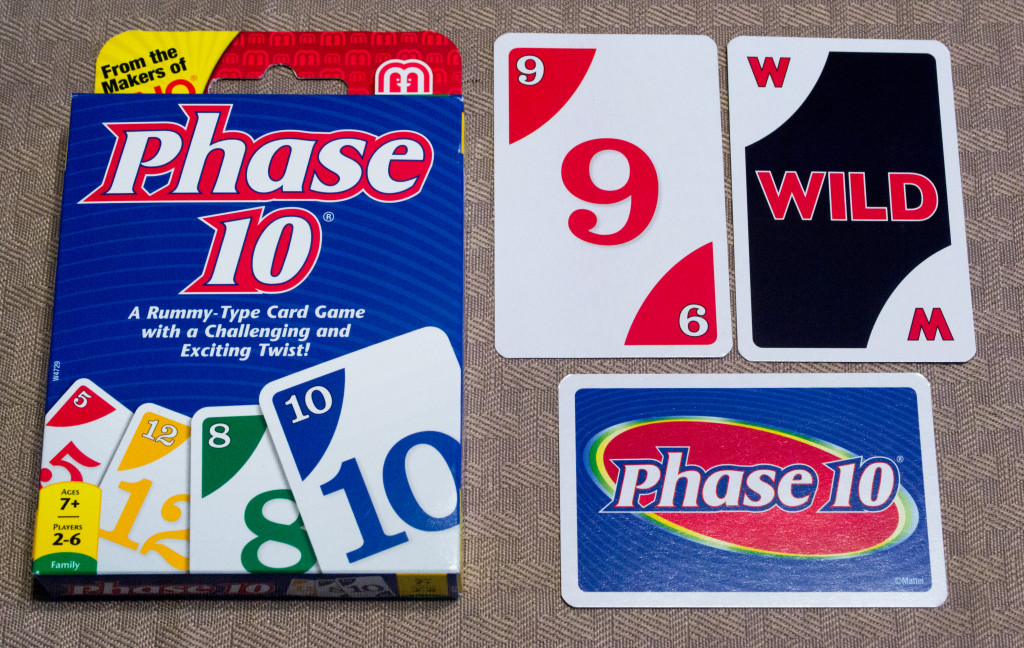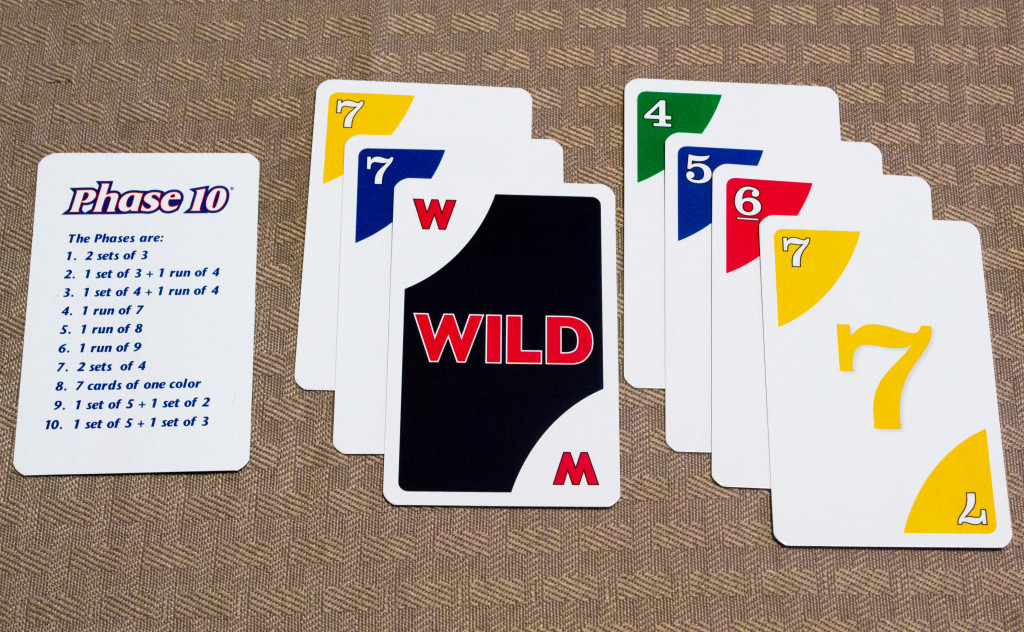Most game critics have one thing in common: the need for more cupboard space. While I too fall victim to such problems, I actually don’t own a lot of games that can support six or more players. What’s worse, the games that I do own that support six players aren’t all that casual…at least, according to the non-gamers in my household. So…I was at my local K-Mart and came across “Phase 10”, a Rummy-type game that I once played back in college but haven’t touched since. Now, my family can be pretty picky when we’re all together trying to figure out a game to play…though we can usually agree on a card game of some sort and “Phase 10” seemed like an easy way to fill the void for only five bucks. Enough about that though, let’s quickly take a look at how it plays.
Components
Cards – The game includes cards numbered 1-12 of four different colors, as well as “skip” and “wild” cards. A player who discards a skip card can make someone else lose a turn while a wild card can be any color/number the player wishes. There are also two reference cards.
Paper & Pencil (Not Included) – You’ll want to have a paper and pencil handy to keep score. 1-9 number cards are worth five points, 10-12 number cards are worth ten points, skip cards are worth fifteen points, and wild cards are worth twenty-five points.
Setup & Gameplay
The deck of cards is shuffled (minus the reference cards) and a card is drawn face-up to form the discard pile. Each player receives ten cards to form their starting hand. The player to the dealer’s left goes first.
The game is played over a series of rounds. During a round, players will be trying to complete the phase that they’re on by laying down the sets/runs in their entirety on their turn. Each phase requires different set/run combinations with the difficulty increasing steadily as players reach phase ten. Phase one calls for two sets of 3, for example, while phase ten calls for one set of 5 and one set of 3.
On a player’s turn, they’ll:
1. Draw a card from either the deck or discard pile.
2. Lay down their phase’s requirements IN IT’S ENTIRETY. If they can’t, then they’ll hold onto their cards and try again on their next turn. If a player can play their phase’s required combination, they can play extra cards on top of their sets/runs in order to empty their hand more quickly. A player who has completed their phase can then “hit” by adding cards they may have to other sets/runs on the table.
3. Discard a card. Play continues clockwise around the table.
Once a player goes out, players will look to see if they’ve completed their current phase. Players who laid down their phase requirement will move onto the next phase on the next round, while players who didn’t will be stuck on that phase and must try to complete it again next round. The player who went out receives zero points while everyone else tallies their cards (scoring explained above). Rounds continue (the role of the dealer moves clockwise around the table) until one player completes phase ten at the end of a hand…if two players complete phase ten in the same round, the player with the lower total score wins.
Note: The above doesn’t cover all of the rules found in the manual, but should give you an idea as to how the game is played.
The Review
I’m opting to keep this short because A) this game has been around a while and B) it’s cheap and relatively easy to play. The hardest part is getting used to how the phases work in conjunction with the game rounds, but once you have that down, it’s all relatively simple. The escalating difficulty of the phases will help to prevent runaway leaders, though luck still plays a large factor in whether or not you’ll get the cards you need to complete your phase before someone else goes out. The cards were easy to read so no issues there and overall, I felt the game was worth the five bucks I paid. I’m sure you could come up with a similar rule-set using a standard deck of cards or two if money is tight. My only complaint is the box, which layers the cards into two decks and can be tough to close. In short, “Phase 10” is easy to recommend to larger groups of casual gamers who enjoy card-based or Rummy-esque games.
Final Verdict: 7/10
—


